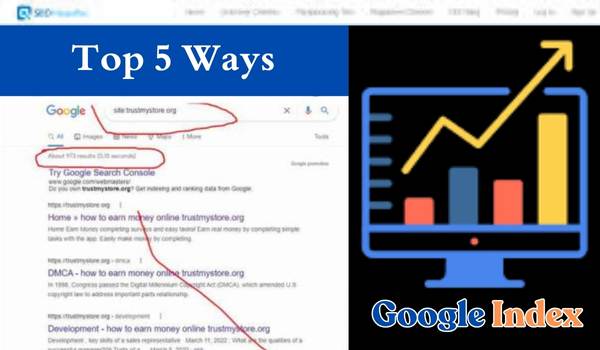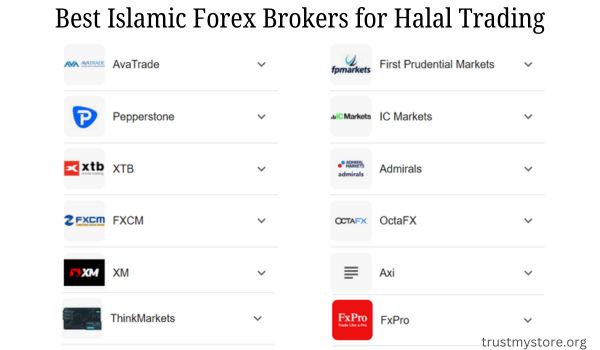20+ Best CPA Affiliate Networks Top Paying Offers

Whether you’re an accomplished subsidiary advertiser or a complete novice, it certainly realizes the best CPA organizations.
Indeed, there are heaps of reasons. The best CPA networks offer nearly high payouts and brag a large number of CPA offers, and the best part is that you aren’t guaranteed to try and have to persuade individuals to hit your member connection and convert on the spot.
Frequently, you’ll get compensated for producing leads, so you can pass on the gig of settling the negotiation to another person.
Like the sound of CPA subsidiary showcasing?
You’re perfectly positioned. In this aid, I’ll Authority Hacker’s pick of the top CPA member networks out at present moment, in light of exploration, audits, and appraisals.
What Is CPA Affiliate Marketing?
Most importantly, how about we get some key exhibitions promoting definitions out the way? CPA means “cost per acquisition” or “cost per action.”.
CPA associate promoting is tied in with creating leads. Though a CPS-based subsidiary program like Amazon Associates is keen on driving deals, CPA member advertisers get compensated for activities like structure entries and programming downloads.
By and by, that implies experienced CPA advertisers will generally zero in exclusively on cost-per-procurement programs because the quality traffic they produce is taken special care of in offers like that.
20+ Best CPA Affiliate Networks Top Paying Offers
1. PerformCb
PerformCb is currently known as Perform[cb], all pieces of consolidation between Clickbooth, Adperio, and Ignite OPM.
In the event, you were asking why CPA networks like Adperio weren’t recorded independently.
All told individuals behind this associate organization have nearly four centuries of industry experience.
However, they have many organized offers traversing various famous internet-promoting verticals.
Also, that incorporates all the typical associates showcasing specialities like Financial, Lifestyle, Health, Dating, Entertainment, and so on.
You’ll track down HBO, McAfee, and eHarmony on their client list, for instance – that is there at great.
Performance Affiliate Network Stats
This member network has an enormous and different determination of offers to advance, has been around starting around 2002, and offers an exceptionally low instalment edge when contrasted with others.
CPA organizations can show up and vanish for the time being.
So managing one that has served promoters and distributers the same for a long time is quite often ideal.
URL: Perform[cb] offshoot organization
Instalment edge: US$50
Installment recurrence: Monthly
2. MaxBounty
MaxBounty is an “OG” in the CPA member advertising game, having sent off back in 2004.
Who named it the best CPA network at the 2019 Blue Book Awards?
Furthermore, it has a lot of affection from CPA partners, offering a decision over 2,000 dynamic missions with sponsors from across the planet.
Any place your crowd is based (sensibly speaking), you’ll find a member program at MaxBounty.
Giving week-after-week instalments, this worldwide subsidiary organization offers execution rewards to top-offshoot advertisers through normal execution-based rewards. Once supported, you’ll be relegated to a devoted member supervisor to help you drive greater quality traffic.
It likewise flaunts a component-rich dashboard that makes it simple for members to keep steady over their profit and watch the most recent, most well-known subsidiary missions.
URL: MaxBounty member organization
Least instalment: US$100
Installment recurrence: Weekly
3. CrakRevenue
No, this grant-winning offshoot network is not a front for Tyrone CrakRevenue.
Because it’s not precisely a generally common CPA network by the same token.
That is because CrakRevenue spends significant time on grown-up partner offers.
This isn’t everybody’s favourite, but it merits bringing up that these offers can you a large chunk of change.
You simply should be practical about the SEO challenges and can look around here for internet showcasing for example third-party referencing.
Thus, what this offshoot network has accessible for willing partners is north of 1,000 offers.
Break Revenue Affiliate Network Stats
This CPA network centres around upgrading payouts to partners given what gives you the most value for your money.
A special reward is that you’ll procure 5% of all deals made by any of your sub-associates/references.
URL: CrakRevenue offshoot organization
Instalment edge: US$100 (for wire move)
Installment recurrence: Weekly or every other month
4. ClickDealer
ClickDealer is a general novice to the CPA showcasing scene, beginning in 2012.
However, they’ve won an honour or award or the like consistently since their commencement.
So they know what they’re doing about CPA promotion.
According to a subsidiary’s point of view, there’s a great deal to like about this worldwide organization.
Chiefly has offers in each of the famous specialities like web-based business, dating, gaming, retail, and versatile.
However, they additionally have offers in the sweepstakes, virtual entertainment, vouchers, and programming specialities.
You’re into celebrating ClickDealer is your sort of organization – they offer a lot of fun impetuses to work with.
Speedy Dealer Affiliate Network Stats
Instalments are made month-to-month for every new member when you pass their US$100 boundary.
You can to week-by-week instalments whenever you’ve substantiated yourself for example you’re not treating stuffing or sending them flop traffic.
URL: ClickDealer partner organization
Instalment edge: $100
Installment recurrence: Monthly
5. CPAlead
As CPA networks go, CPAlead centres around both versatile and work area offers, yet they have serious areas of strength for a portable.
Moreover, they likewise have 300 items and administrations you can advance employing various arrangements, including standard promotions, popups, pop-unders, and local advertisements.
Furthermore, they deal with all the geo and gadget explicitly focusing on trickery for you.
All that you need to do is pick the deal you think will change over best, and drive warm traffic to it.
As you can see from the logos beneath, this promoting network accomplices with probably the greatest and best brands on the planet.
Cpa Lead Affiliate Network Stats
This is most likely why they’ve had the option to pay out over US$100 million to their offshoot advertising accomplices.
CPAlead would seem, by all accounts, to be one of the more settled CPA networks on the scene.
Payouts are through wire move, Payoneer, PayPal, Paxum, ePayments, and WebMoney.
URL: CPAlead associate organization
Installment limit: $50
Installment recurrence: Weekly
6. Admitad
Next up for examination is Admitad, a CPA network I had no clue even existed until I began the explanation for this piece.
That doesn’t change they’re a worldwide member-promoting network with nearly 2,000 exceptional publicists.
What’s more, only for once, it’s not just about interstitial promotions or application introduces they likewise offer a logical publicizing choice for adapting your site traffic.
So your guests will not need to tinker with shutting pop-ups, you get to adapt your substance with delicious CPA offers.
That makes them fairly special among the CPA networks in this gathering.
Admitad Affiliate Network Stats
When you have a web-based promoting/offshoot business there are not many things you’ll think often more about than having the option to bring in cash.
All things considered, cash talks and cow-like faecal matter perambulates somewhere else.
Subsidiary advertisers working with this CPA network guarantee a profit of $32,700 in a solitary day (see above).
That is someone working at a genuine scale with traffic, and so forth yet it shows you what’s conceivable while work Cost per Acquisition offers.
URL: Admitad subsidiary organization
Installment limit: $20
Installment recurrence: Weekly (wire move in response to popular demand)
7. CPAMatica
Cpamatica is a Ukraine-put-together subsidiary organization that concentrates on two key verticals – dating and sweepstakes.
Why those two?
Since the payouts will generally be significant side of things – the two promoters and distributers benefit here.
Altogether, you have very nearly 1,000 unique proposals to work with.
These range over two verticals, however, Cpamatica additionally has offers in a portion of the other famous specialities like weight reduction, wellbeing, gaming, magnificence, and so forth. Implies they ought to have something to interest most sorts of site traffic.
Cpamatica Affiliate Network Offers
As is common with 90% of CPA organizations, they don’t distribute program subtleties openly.
You likewise get compensated 2% of any deals made by associates you allude to this cost per procurement organization.
URL: CPAmatica associate organization
Installment limit: $50
Installment recurrence: Weekly
Toro Advertising is a European CPA network that makes a few pretty striking cases.
For example, “… assuming you want any proposition they have it.”
Their portfolio traverses a huge number of offers, across different famous verticals like dating, betting, finance, applications, and versatile substance.
In addition, their organization works in 90 distinct nations all over the planet.
Is this one of the most incredible CPA networks out there?
They’re surely worth another glance if you haven’t previously attempted them.
Toro Advertising Affiliate Network Brands
Toro Advertising is accustomed to working with CPA subsidiary advertisers at all phases of their vocation – from beginners to distributors who can push a ton of traffic.
What’s more, you can perform you’ll get elevated to their “celebrity” section, with every one of the advantages that accompany that.
Installments are month to month for the primary month you can move to week-by-week instalments after that.
This is the standard for a significant number of the best CPA organizations
URL: Toro Advertising subsidiary organization
Installment limit: US$500
Instalment recurrence: Monthly to begin then, every other month or week after week
8. AdWork Media
There are bunches of CPA networks out there, so what separates AdWork Media from its rivals?
Aside from having a brand name that verges on irritating Google.
Indeed, the primary thing is the number of missions/promoters they oversee – more than 2,500 last time anyone checked.
In any case, what they have practical experience in is content-locked offers that are likewise versatile.
Essentially, your guests complete a study or free preliminary to open the substance they need to see.
What’s more, you get compensated when that’s what they do.
AdWork Media Affiliate Network Stats
In this way, similarly, as with most CPA organizations, you can see offer subtleties once you join them.
In any case, they do offer execution rewards for genuine members.
You need to work with regularly scheduled installments to begin however you can change over to week after week after that.
URL: AdWork Media offshoot organization
Instalment edge: US$35
Installment recurrence: Monthly
9. Advendor
You haven’t known about Advendor before today?
That is OK – they’re spic and span to the market, which is a reward for the two sponsors and distributors.
Fundamentally, they’ll be quick to work with you.
The disadvantage here is that insights regarding them are flimsy on the ground.
Given their client list, however, it’s most likely correct they put a great deal of accentuation on the cryptographic money vertical.
In any case, the potential gain, and especially for novice CPA advertisers – is that their offshoot endorsement cycle ought to be permissive.
Furthermore, you’re proceeding with a potentially dangerous course of action while working with a shiny new CPA organization.
Adventure Affiliate Network Brands
This organization has an instalment edge of US$50, with week-by-week payouts.
We’ll refresh this blog entry with more data on Advendor, as and when it opens up.
URL: AdVendor partner organization
Commission: Varies
Installment limit: US$50
Installment recurrence: Weekly
10. Fireads
Fireads is a Poland-based CPA network that has been doing business for very nearly 10 years now.
They’re one of numerous European associate organizations currently beginning to make their presence felt globally.
As far as what they do, they represent considerable authority in CPA offers, yet in addition, Pay-per-introduce, CPS, and CPL lobbies for you to adapt your traffic with.
This organization works in various verticals like grown-up, dating, gaming, and cryptos.
These are cutthroat business sectors, however the payout is typically more than worth the effort.
Friends Affiliate Network Stats
This CPA network professes to have presented that compensation to $350 per deal, which would be appealing to most member advertisers.
However, with the comprehension that this is the special case as opposed to the standard.
Just like with even the best CPA organizations.
Withdrawals are accessible through PayPal or wire move promptly after a checked deal.
URL: Fireads associate organization
Instalment edge: US$20
Instalment recurrence: Bi-month to month
11. Madrivo
Bringing in cash as a member advertiser Madrivo boils down to a straightforward condition:
Qualified traffic + extraordinary deal = advantageous pay.
The sort of thing the group at Madrivo comprehends, particularly since, supposing that you’re not bringing in cash then they’re not bringing in cash.
So they give you admittance to associate proposals from probably the greatest brands on the planet.
Furthermore, across a different scope of verticals, including everything from web-based dating to vehicle protection and pet membership boxes.
Madrivo Affiliate Network Brands
The sum you’ll acquire will rely upon what offers you advance.
Be that as it may, on account of Madrivo your instalment edge can likewise be crusade subordinate.
They truly do offer a $2,000 execution reward because you can procure over US$1,000 each week inside your initial 60 days with them.
URL: Madrivo offshoot organization
Instalment edge: Depends on the crusade.
Instalment recurrence: Monthly or week by week
12. GlobalWide Media
GlobalWide Media is a partner network that has been around for well more than 10 years at this point.
What’s more, regardless of whether you haven’t known about them, that hasn’t halted them giving premium media answers for probably the greatest names on the planet.
Like Jumia, AliExpress, Groupon, MindSpark, and Hotels.com for instance
This is the nature of brands – and their CPA offers – that associates gain admittance to while working with Globalwide Media.
How great would they say they are at what they do?
They create around $3 billion in deals every year for their sponsors – results that hands down the best CPA organizations can deliver.
Globalwide Media Affiliate Network Stats
Beginning with the rudiments, this organization has an instalment limit of US$100 and instalments are month to month.
You can likewise procure a 5% reward on all deals made by you allude to this CPA organization.
URL: Globalwide Median offshoot organization
Instalment edge: US$100
Installment recurrence: Monthly
13. Adscend
Adscend began as a two-man business and smart.
From that point forward they’ve developed into a subsidiary organization with more than 35,000 distributors.
Verification that assuming you have a smart thought and a strong working attitude you secure any market.
So what kinds of offers or missions are accessible to partners?
They’re quiet on that one – you need to join to find out.
However, every one of their missions is accessible to incorporate on your site of an iFrame or API or your versatile application through SDK mix.
Adscend Affiliate Network Stats
CPA organizations can offer you the world, yet except if you get compensated on time all the other things are useless.
Adscend has never missed a distributer instalment cycle.
Getting compensated is significant when choosing the best CPA organizations to join.
URL: Adscend offshoot organization
Instalment edge: US$50
Instalment recurrence: Monthly, every other month and week after week
14. A4D
A4D means “Promotions 4 Dough”.
All in all, putting the marginal wince name aside, what might you anticipate from them as a CPA partner organization?
It really required a long time to find out they’ve chosen to involve a portable connection point for their whole site… which is odd… and not supportive.
Albeit this is the sort of thing even the best CPA organizations can be at fault for example poor UX.
At any rate, after some looking around I found that they do have a ton of respectable proposals in enough specialties to keep most partners cheerful.
You get all the standard stuff like well-being, wellness, and magnificence, yet they additionally offer missions in finance, online business, and business open doors.
Ad4 Affiliate Network Offers
The delicious insights regarding their offers are all secret inside the participation region, as with most CPA organizations.
Yet, they guarantee distributors that they cautiously vet every publicist and work with high-changing over offers.
URL: A4D subsidiary organization
Installment limit: US$50
Instalment recurrence: Monthly or week by week
15. Mobidea
The way that Mobidea is an offshoot network zeroed in on portable offers shouldn’t come as any amazement since… it’s in their image name.
You get a full offers divider to work with, where you can single out the most ideal advancements anyone could hope to find.
Be that as it may, you can likewise select to utilize their ‘SmartLink’ highlight.
This naturally gives your guests the most appropriate to them in light of the geographic area.
You can likewise take your CPA subsidiary showcasing to a higher level with the ‘Mobidea Academy’.
On and Charles Ngo exceptionally of this versatile partner organization—he rates them as one of the most incredible CPA networks for new members.
Mobidea Affiliate Network Testimonial
This is a rare example of CPA networks that permit you to look at their proposals before you join.
Procuring potential, their offers settle up to $36 per deal, which is significant.
URL: Mobidea offshoot organization
Installment limit: €50
Installment recurrence: Monthly
16. Advidi
Here we have one more European partner organization – Advidi.
Their site looks and feels more like a computerized promoting organization than a partner organization.
Or on the other hand, perhaps that is me?
One way or the other, you want to track down data on what kinds of offers you can advance.
Advidi has numerous missions that might give the impression of being a genuinely static rundown of probably the best CPA verticals – dating, sweepstakes, sustenance, gaming, and money.
However, those offers range everything from dietary projects to clubs.
Advidi Affiliate Network Offers
Advidi is a legitimate fault for a similar sin by a larger number of people in these organizations – making data challenging to track down.
In any case, we know that if you need to get compensated week after week you’ll have to create $1,000 in deals commissions every week.
However, be one of those subsidiaries that can push a genuine measure of traffic to hit that objective.
URL: Advidi subsidiary organization
Instalment edge: US$1,000
Installment recurrence: Weekly and month to month
17. AdCombo
Adcombo has the slickest site of any of the organizations in this gathering.
In any case, they’re not just about great looks.
They likewise guarantee to have selective missions not accessible on some other CPA partner organization, spread across 12 verticals.
That incorporates specialities like the ones recorded beneath.
Furthermore, they support more than 40 dialects, so you get genuine geo-explicit presentation pages.
These are served from their worldwide organization of servers for the most ideal burden times.
Yet, they likewise have offers in gaming, forex, wagering, antivirus, backdrops, and VOD (Video on Demand) for instance.
Adcombo Affiliate Network Offers
Members are paid week after week and with no underlying deferrals or fake holds.
That is an invigorating change from a few different organizations where instalments can be deferred for quite a long time.
Or on the other hand forever.
Initiation is likewise pleasingly basic. Information exchange, affirm your enlistment employing email, then, at that point, trust that your partner supervisor will reach out to a couple of inquiries concerning your experience.
URL: Adcombo associate organization
Installment limit: US$50
Instalment recurrence: Bi-week by week
18. RevenueAds
RevenueAds adopts an altogether different strategy for getting distributors to join with them.
The specific inverse of what you get with most CPA partner organizations.
What I mean by that is that you can peruse the various missions on offer without pursuing a record
What’s more, the offers are very great.
They even have list card crusades with a CPA (Cost per Action) payout of up to $350 for one “deal”.
I haven’t seen payouts like that since the times of Mastercard associate proposals in 2005.
This could be probably the best organization for this gathering.
Revenue ads Affiliate Network Top Clients
What’s more, as you can see, they’ve worked with probably the greatest and best brands in various rewarding verticals for example web-based dating.
More so than a portion of the greater organizations we’ve gone over.
So there’s a ton of likelihood here for smart subsidiaries who can push qualified traffic to their offers.
URL: RevenueAds subsidiary organization
Instalment edge: US$50
Instalment recurrence: Bi-month to month
19. Panthera Network
You need to flip a coin and highlight an organization in a gathering like this.
Panthera Network illustration of this since I’ve never known about them.
In any case, they go to Affiliate Summit East, which adds to their authenticity.
Furthermore, there’s additionally the way that they’ve been doing business for a considerable length of time.
Life span is an or more industry where CPA offshoot organizations can show up and vanish practically for the time being.
Can You Get Life Insurance for Someone Else
Update: Their help group answered my solicitation for data in around 30 minutes with precisely what I wanted. That is the awesome / quickest reaction I’ve gotten to a question in my years in partner showcasing.
Panthera Network Stats
Along these lines, feel free to contact them to get clarification on pressing issues.
Getting compensated for advancing the items and administrations of their promoters, you likewise procure a 5% cut on all deals created by anybody you allude to their CPA showcasing network.
URL: Panthera subsidiary organization
Installment limit: US$50
Installment recurrence: Monthly
20. Advanced Media Solutions (Formerly W4)
Advanced Media Solutions (Formerly W4) is a forerunner in the worldwide martech industry.
Goodness, “martech” is the joining of showcasing and innovation, or, ye know, partner promoting.
I’m certain it’s an impeccably cromulent word.
So under all the publicity, we find a CPA network that is effectively searching for subsidiaries to advance their sponsor’s items.
Particularly in the more serious verticals like protection, purchaser money, training, and membership administrations.
And that this could at present be perhaps the best organization for new CPA associates who will buckle down.
Advanced Media Solutions Affiliate Network
In any case, there are no subtleties on how much their offers pay.
So you’ll have to join to figure out more.
URL: DMS associate organization
Installment limit: US$100
Instalment recurrence: Bi-month to month
21. Convert2Media
Convert2Media, otherwise called C2M, is a US-based member network that has been doing business since around 2007, which probably implies it’s great at what it does.
It highly esteems never having missed an instalment, which is something to be thankful for — all things considered, you’re not doing CPA promoting for no particular reason; you’re doing it to bring in cash!
You’ll find many CPA offers at Convert2Media, while the $100 instalment edge and week-by-week instalment recurrence are good enough among the top CPA subsidiary organizations.
Past that, data on its site is scanty definitely, so you’ll have to join to figure out more.
URL: Convert2Media partner organization
Least instalment: US$100
Installment recurrence: Weekly
22. Affiliati Network
Like Convert2Media, Affiliati Networks work with the understanding that if you have any desire to see if it’s one of the most mind-blowing CPA member networks out there, you’ll simply need to join and see with your own eyes.
By this I mean you will not learn a lot by checking its site out.
Everything I can completely say to you is that its rundown of CPA publicizing clients makes for pretty great perusing, including any semblance of Dollar Shave Club, LendingTree, and McAfee.
Affiliate Network Clients
Those are gigantic, believed brands, which makes your work—driving quality traffic that proselytes—far simpler to perform.
URL: Affiliate partner organization
Instalment edge: US$100
Installment recurrence: Net 15
23. Lemonads
With over 10 years of CPA subsidiary promoting skill, Lemonads has an unshakable standing worked around productivity and results.
That standing has assisted it with joining an immense arrangement of publicists and distributers, including easily recognized names like British Gas, Uber Eats, and Norton.
Lemonads Clients
As per its figures, somewhat recently the Lemonads CPA network created 3,000,000 hits and 6,000 qualified leads across 1,800 offshoot programs in 200 nations.
Also, the noteworthy sounding insights continue to come because Lemonade claims a shocking 85% of subsidiary advertisers see their incomes increment within the initial three months of utilizing its foundation.
All of this makes us very certain to name Lemonads as one of the top CPA subsidiary organizations we’ve seen.
URL: Lemonads associate organization
Installment limit: US$100
Installment recurrence: Daily or week by week, contingent upon volume
24. Adsterra
Adsterra is most popular as a promotion organization (subsequently the name), yet it additionally runs one of the most mind-blowing CPA networks.
It flaunts CPA offers across a wide scope of alluring specialities, including:
Betting
Gaming
Antivirus
Utility
VPN
Programming
Dating
Sweepstakes
The decision is no joke for Adsterra because it likewise permits partner advertisers to pick their preferred instalment technique from a rundown that incorporates PayPal, WebMoney, Paxum, and Bitcoin, and the sky is the limit from there.
Furthermore, with a base instalment of just $5 through Paxum and WebMoney, you can, in any case, get week-after-week instalments regardless of whether you’re not producing a lot of leads.
To assist your execution, you’ll get admittance to a devoted partner director.
URL: Adsterra partner organization
Installment limit: US$5
Installment recurrence: Every Monday
Best Automated Email Marketing Software
Over To You
Also, that finishes our gathering on the best CPA networks we could find.
As may be obvious, showcasing CPA offers can be a solitary deal.
That is without referencing Peerfly, an incredibly well-known CPA network that won a few honours yet has now unfortunately shut its entryways.
It’s uncommon to track such proposals in “customary” member promoting.
Indeed, a few organizations are missing from this rundown that could show up on different websites.
Be that as it may, we have quality norms to keep up with… no doubt we passed on specific CPA organizations.
Particularly those with standing for not paying their offshoot showcasing accomplices on time.
Or on the other hand ever… which most certainly occurs.
Since there’s little point in investing energy into building a subsidiary site on the off chance that won’t bring in cash.
Be that as it may, it’s similarly vital to figure out how to fabricate your site the correct way.
Something we’re glad to tell you the best way to begin with—for nothing—in our free preparation for subsidiary showcasing.
And negative, you don’t need to purchase anything.
We disdain that phoney master BS similarly.
Also, we’ll see you within.



